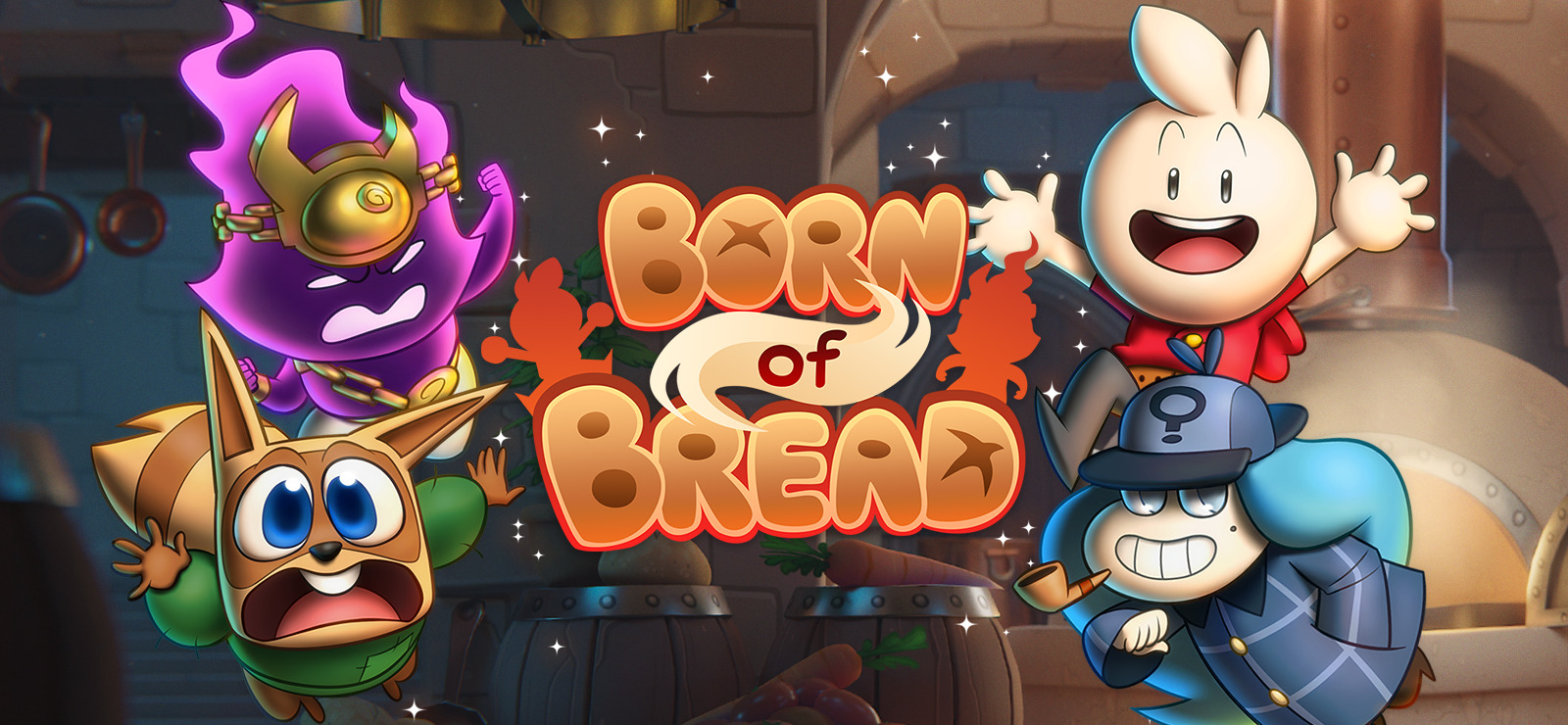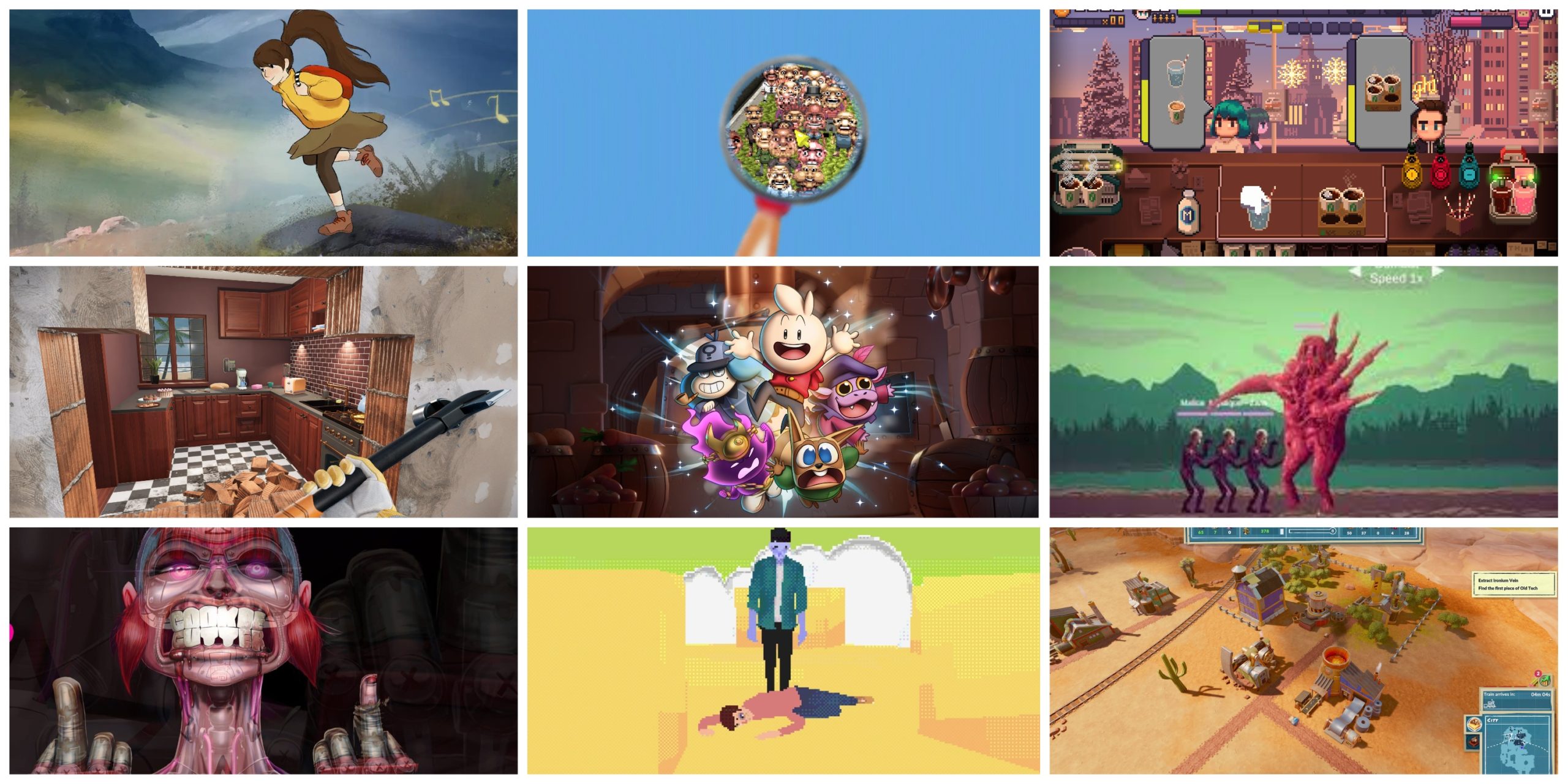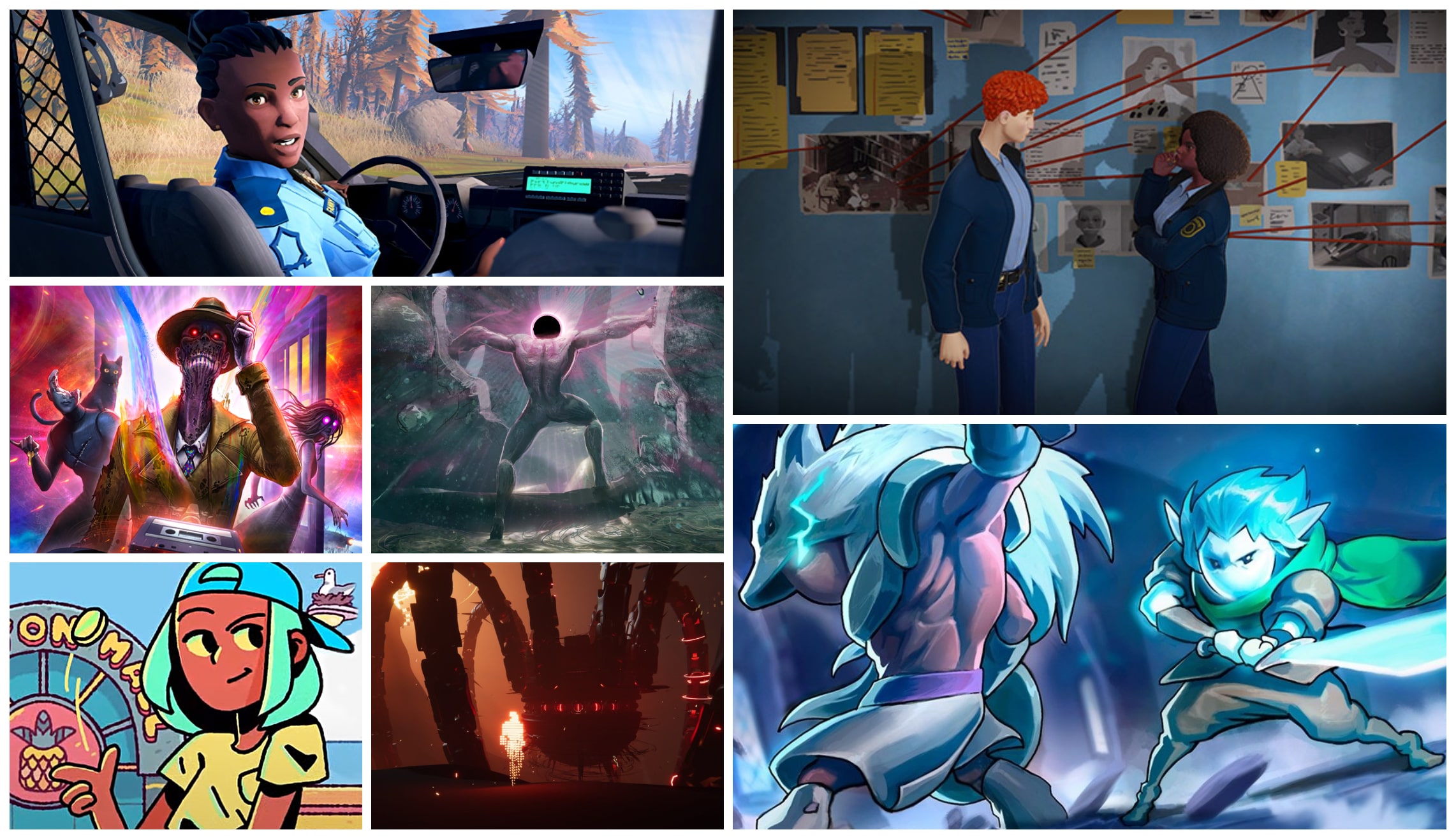Born of Bread Review (PS5) – What’s The Foccacia?
2023’s been quite the year for RPGs: Baldur’s Gate 3 blew the proverbial gate off its hinges, Sea of Stars was an ocean of quality, the list can go on and on. However, if you had a 2.5D RPG with a whole bakery of patisserie puns on your Bingo card then… You’d be absolutely shouting from the rooftops as Born of Bread is out right now.
The game’s art style has been compared to Paper Mario as Born of Bread has a wonderfully crafted crop of 2D characters occupying a 3D space; melding the two art styles to create a vibrant and cosy world that never failed to put a smile on my face every time I’d boot it up. But with all these ingredients and a world-renowned recipe, how does the Born of Bread crumble? Let’s get into it.
Proofing The Plot
Born of Bread opens with explorers stumbling upon ancient ruins, only to unleash the game’s antagonists – Jester and friends – into the world. They’re looking for the Sunstone Shards, a set of artefacts I’ll get into. Cut to the fantasy kingdom known as Royal Town, where we meet Papa Baker in the kitchen cooking dinner for the queen. An oddly familiar-looking guard shows Papa Baker a recipe and following instructions creates the game’s protagonist, Loaf!
The intro is abrupt, and within moments you begin exploring the castle’s interior as Loaf, ladle in hand ready to smash the environment. 90% of the dialogue at this point is puns. Whilst it’s quirky and irreverent, I was waiting to get more into the plot. Essentially, Jester is looking for the Sunstone Shards for bad, Loaf is looking for them to stop Jester and in true adventure fashion, Loaf is always on the back foot. I wish I could be more descriptive and break down what the story has to offer, but outside of a few quips and a couple of character developments, there is but a slice of it to enjoy.
Loaf as a character either has nothing to say, a snarky pun or an empathetic pun depending on your choice. Other than that, he’s silent, letting the supporting cast be the personalities for the game. Descriptions, dialogue, locations and general world-building feel disjointed as they’ll either semi-explain something or be sarcastic about it as if the audience will already know, but I didn’t know! The brisk nature of the pacing from the intro and the vague world that I’m inhabiting would make sense for a sub-10-hour romp; but I’m here 15 hours later on Act 4 of 5, with a bug that has stopped me progressing just wondering if I care.
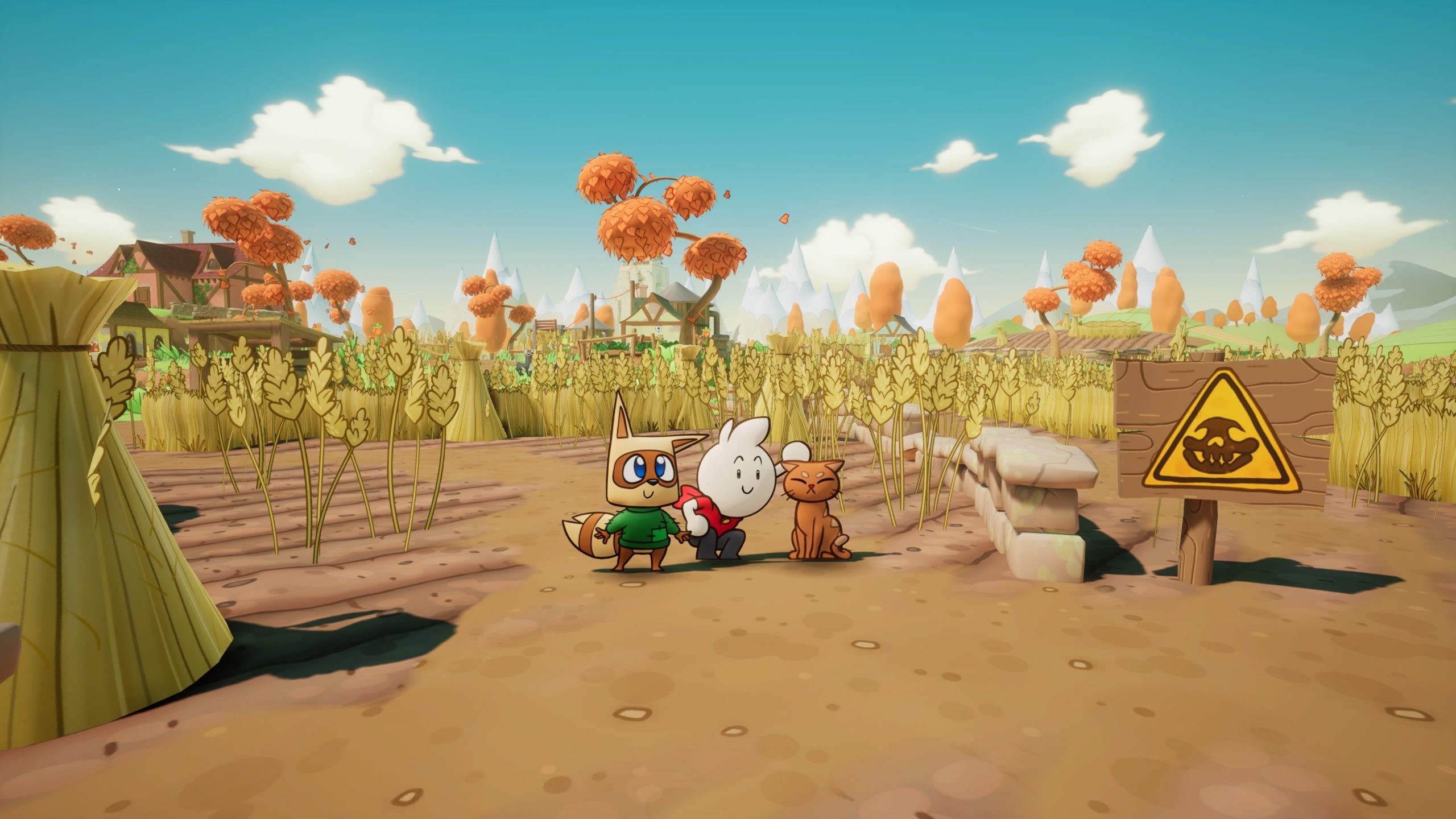
Loafing Around
There is a surface-level charm to the world’s design, the cutesy characters and the pun-per-minute going into the hundreds. However, the longer I played, the more I could see the problems I had with it. Firstly, the camera – I mentioned that it’s 2.5D, meaning the camera is a side-on view like your Castlevanias, Marios etc. but the characters can move not just left and right of the screen but forwards and backwards. Immediately I found myself fighting with the camera as I was traversing.
You can’t see all the environments all the time, and there are even moments where you’ll be taking entire leaps of faith hoping that this is the right way and not a pit. This probably wouldn’t be so frustrating, but the elements surrounding it just exacerbate the issue – mainly by the combat. Born of Bread uses the classic turn-based combat with elements similar to Persona or Pokemon. There’s a rock, paper, scissor-type formula as different attacks, do different elements of damage and enemies are more resistant or weaker to them.
99% of the attacks cost WP to use, which is a finite resource in battle unless you effectively defend an attack, use an item, please the crowd or are watching (you have a dragon friend named Dub who livestreams all your battles, he’s pretty cool). Now, regaining WP will take place instead of an attack and more often than not you’re taking damage per turn, so you’re either left to out-damage your opponent first round or juggle each element, making it 3x longer. Your WP or Health doesn’t recover after battle and rest points are few and far between, so you’ll have to use items.
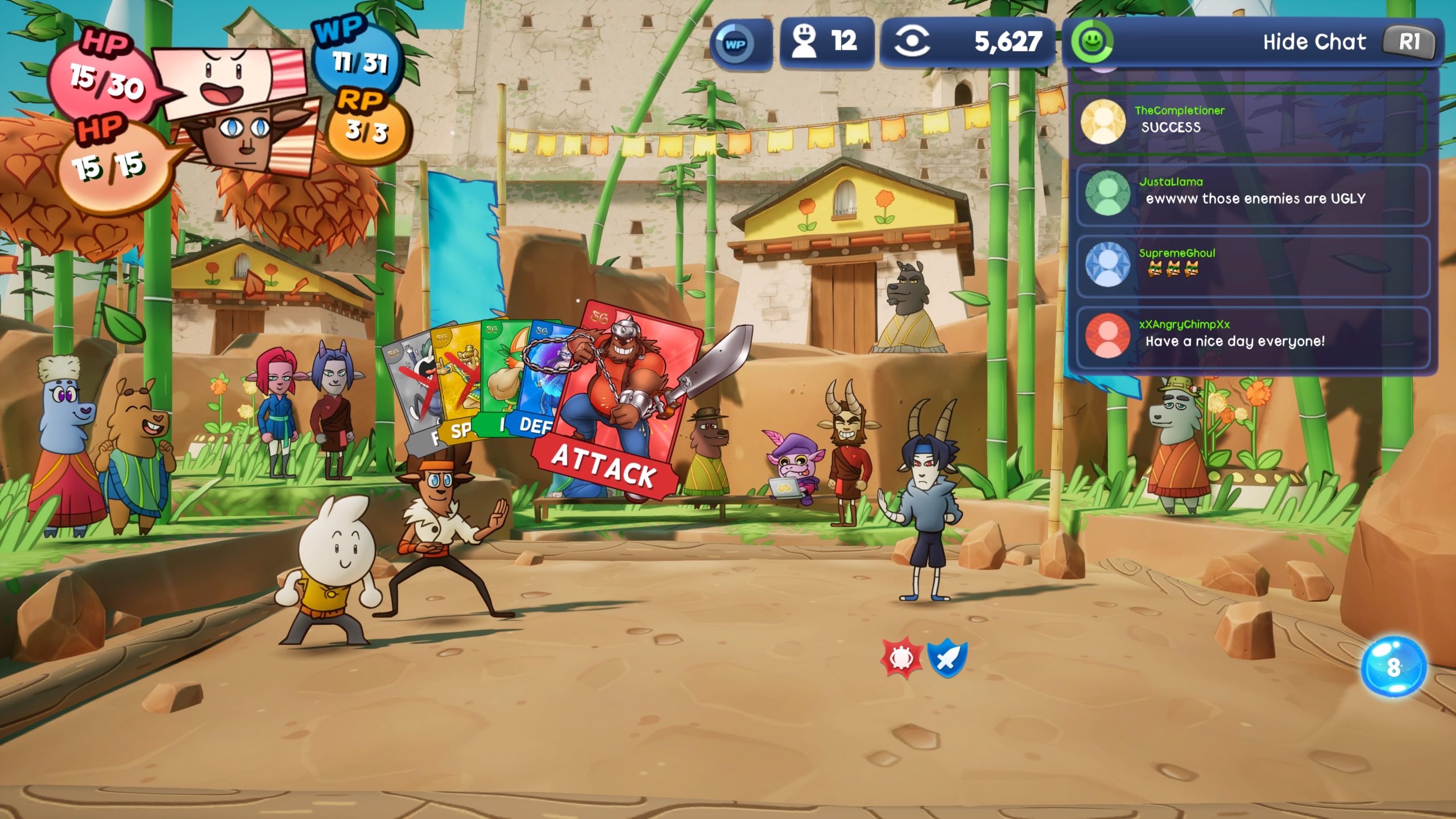
The Price Of Bread
However, you are capped for a good portion of the game to 10 items, most of which add 5-15 onto your HP or WP – can you see where this is going? This also accounts for the metallic clovers (the currency) you find along the way as there’s a stringent limit for them too. For hours I’m exploring a wonderfully vibrant world, smashing boxes and swapping items I find or picking up money that I can’t spend cause I have too much of it already.
Why be so giving if I can’t have it in the first place? It feels like an artificial attempt at progression because at the halfway point of the game, maybe a bit further, you finally start feeling how the game should have played within the first hour. Tied to the combat are a bunch of minigames to pull off the move, failing to do so means no damage for you.
These are things like tap ‘X’ at the right time, hold ‘X’ till it reaches the green. On the defensive side, you can press ‘X’ at the right time to negate some damage and gain WP. They do keep the combat engaging if you’re into it, but it is completely unavoidable, which for some that may not have the dexterity will be left never being able to fight. There’s a non-descript ‘Gluten Free Mode’ that at a glance doesn’t change anything and the option to turn off elemental damage, which again I haven’t noticed. It feels careless, like ticking a box, a stark contrast to its warm and inviting exterior.
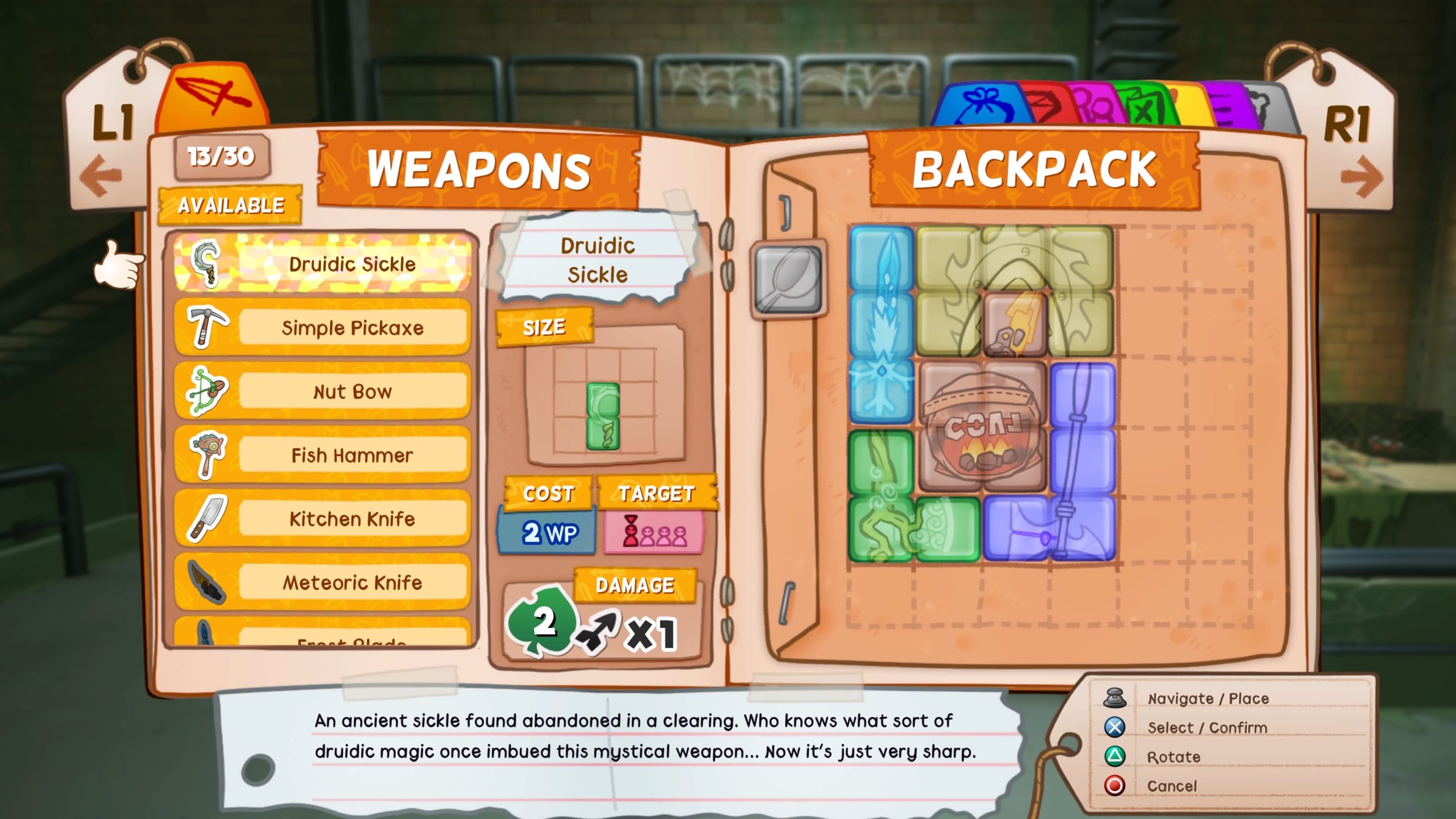
Master Baker
Progression does make the game easier and going through the game I never found levelling up to be a grind as long as you’re facing newer, tougher enemies. Levelling up gives you the choice to increase your HP (health), WP (attack points) and RP which is tied to your special, but I have to say I only used a special once – it feels completely moot. Then you can upgrade your backpack space for more weapons to equip at once or your boon slots.
The boons go from “This should have been base kit” to “I can see this being useful” and equipping the right ones is essential to making the game easier on yourself. Some will telegraph when you should block, others will show the enemy weaknesses, that type of stuff and it feels like the most useful part of the game. It’s also very pretty to look at, the 2D characters are full of visual flair and their bold lines stick out from the 3D landscape in good Paper Mario fashion.
The areas also have some delightful variety. From the eastern-influenced mountains with temples and iconography of Buddhism, The Stanley Hotel atmosphere of a haunted lodge encapsulated in a blizzard, to inside the belly of a beast – the names are basic but the locations and art direction are anything but. The two art styles blend seamlessly as their differences accentuate each other, making it a joy to explore the nooks and crannies – when I’m not falling off the environment.

Cutting The Crusts Off
And that’s just it, Born of Bread has a distinct visual identity despite its open influence. Even the music is incredibly inspired, taking the aesthetic themes and creating absolute audible jaunts to match them. Despite that, the filling for this bread-filled adventure just doesn’t quite cut the mustard. Think of Born of Bread as the crusts of a bread loaf. A divisive slice that most people wouldn’t pick first, but those who do, absolutely love it.
For now, at least, I’m picking a more central slice to butter my gaming appetite. There are just a couple of nitpicks in what’s ultimately a standard adventure that amalgamates into a less-than-stellar overall package. With a few quality-of-life improvements and bug fixes so I can beat the game, I’ll definitely be back for seconds, but for now, I’ve had my fill.
This might be just the right game for people who want that paperlike RPG fix. It’s a pleasant enough journey when you’re playing, enjoying the puns – though results may vary – and soaking in the fantastic visual style. This isn’t the most accessible RPG, but one for players who like balancing systems in harmony. As bread connoisseur and patisserie savant Paul Hollywood might say, it’s a little underbaked. So maybe don’t expect a handshake for this one.
Born of Bread would grab your attention if it was in the shop window of a bakery. It has all the hallmark elements for a warm and inviting paperlike RPG, though its contents are lacklustre with a basic story, systems that punish your exploration and a combat system that needs a little tinkering. However, the heart of the game and all-around pleasantries do make it at least half a baker’s dozen.

Born of Bread is available now for PlayStation 5 (review platform), Nintendo Switch and PC via Steam.
Developers: WildArts Studio
Publisher: Dear Villagers
Disclaimer: In order to complete this review, we were provided with a promotional copy of the game. For our full review policy, please go here.
If you enjoyed this article or any more of our content, please consider our Patreon.
Make sure to follow Finger Guns on our social channels. Twitter, Facebook, Twitch, Spotify or Apple Podcasts – to keep up to date on our news, reviews and features.
